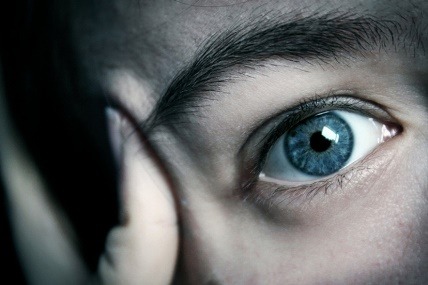Transcranial Direct Current Stimulation (tDCS) as depression treatment: much promise, some DIY risks

—For people with severe depression, incorrect application can worsen their condition or cause memory loss. Nathan O’Nions/Flickr, CC BY-NC
Around 350 million people worldwide have depression. Antidepressant medications are often prescribed to treat the condition, alongside talking therapies and lifestyle changes such as regular exercise.
But a substantial proportion of people either don’t respond to antidepressants, or experience such significant side effects that they’d prefer not to take them.
In search of alternative solutions, researchers around the world, including our team, are investigating transcranial direct current stimulation (tDCS) as an alternative treatment for depression. But this isn’t something you can safely try at home.
Unlike electroconvulsive therapy, tDCS uses very mild electric current to stimulate the brain and has few side effects. The mechanics of tDCS are quite simple, involving a battery, two leads and the electrodes through which the current is passed.

—Researchers are yet to fully understand the effects of varying stimulation approaches. Tinydevil/Shutterstock
The stimulation works by changing the activity of nerve cells in the brain. In depression, the left frontal areas of the brain are often less active than usual. tDCS stimulates this area to restore brain activity.
We’re still evaluating the effectiveness of tDCS, but so far studies have found that tDCS works better than a placebo (or simulated treatment) at reducing symptoms of depression.
When combined with the antidepressant medication sertraline (marketed as Zoloft in Australia), the combination tDCS-drug therapy works better than medication or tDCS alone.
Research has found that among people with depression, a course of tDCS can improve the brain’s “neuroplasticity”, which is the brain’s ability to learn and adapt to changes in the environment.
The therapy has a good safety profile – if administered by clinicians and researchers trained in stimulation technique and safety. Our research team has administered thousands of tDCS sessions without incident.
But this is not the case when tDCS is used in the “DIY” context, with DIY users trying to stimulate their own brains.
This phenomenon is often guided by online forums and websites dedicated to DIY tDCS. Users comment on their own experience and share tips on how tDCS can be used to treat their own depression. People with no medical training and limited understanding of tDCS self-treat their depression and advise others on treatment.

—Stronger is not necessarily better. Ian Ruotsala/Flickr, CC BY-NC-SA
So, what can go wrong?
The most obvious concern is that poor technique and improper electrode placement could cause skin burns.
What’s more concerning is the ability for tDCS to produce lasting changes in brain functioning. Depending on how tDCS is given, these changes could be good or bad.
A DIY user could, for example, cause lasting impairment to their thinking and memory. For people with severe depression, incorrect application could worsen their condition or induce a hypomanic (manic) episode.
When it comes to medications, it’s important to get the right dose and dosing schedule. That’s why this role falls to qualified clinicians and researchers. The same goes for tDCS: current intensity, electrode size and position, and the duration and frequency of the stimulation determine the effects in the brain.
The relationship between dosing, intensity and position is highly complex. This isn’t a simple case of “the stronger the better”. Even researchers are yet to fully understand the effects of varying stimulation approaches and much more research is needed.
As with other forms of treatment, TDCS is not suitable for everyone. In clinical research trials, participants are screened for suitability to receive stimulation and their likelihood of responding to treatment. The stimulation is carefully controlled and the participants’ mood is carefully monitored during and after the course of treatment.

—A substantial proportion of people don’t respond to antidepressants, or experience significant side effects. Divine Harvester/Flickr, CC BY-NC-SA
tDCS represents a promising future, where simple and cost-effective treatment for depression is possible, without drugs. Researchers worldwide are continuing to study this experimental treatment, which may one day become a conventional treatment for depression.
The acceptance and popularity of tDCS among the general community is encouraging. But tDCS is still experimental and isn’t safe to administer at home. DIY users are not trained in proper technique nor are they trained to identify, prevent or deal with unexpected outcomes.
– Kerrie-Anne Ho, PhD is a candidate in non-invasive brain stimulation at UNSW Australia, and Colleen Loo a Professor of Psychiatry at University of NSW, Sydney. This article was originally published at The Conversation.
Learn more:



“Even researchers are yet to fully understand the effects of varying stimulation approaches and much more research is needed”. Yes, quite. It sounds as though they are almost as much in the dark as we are, the lay public.
Given the risks taken daily with over-the-counter medicines, and mis-application of prescribed meds, the added hazard of a minority tinkering with a few milliamps would seem tolerable. I should state here that just once so far I have tried tDCS, using a PP3 battery, a multimeter, simple rheostat and wet tissue pads. 15 minutes at 2 milliamps. Slight tingling, slight reddening, and a decided lift in mood which lasted many hours, though I’m well and not depressive — and there were no undesirable effects. Very promising, in my anecdotal view.
It would be a good idea to put around much more information so we don’t attempt really stupid things, like plugging into the mains, or getting the battery polarity wrong.
Hello Howard, thank you for sharing your insights. In terms of more information, we prefer to stick to good research in this area rather than to specific DIY tips, given precisely the risks you mention. tDCS is very promising, but for the time being consumers would be better served trying other, safer things first.